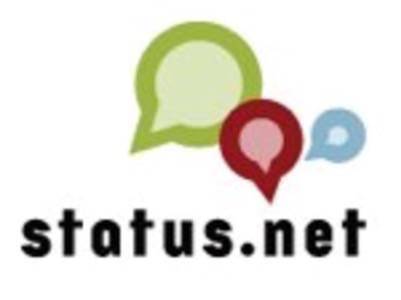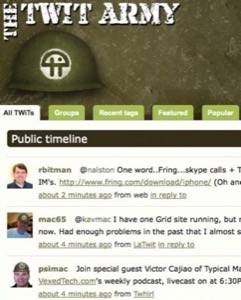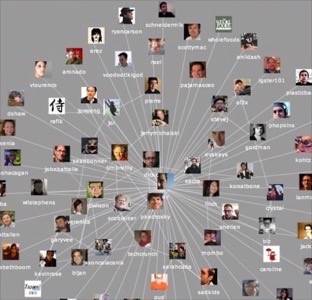Few companies have captured the world’s attention online in recent years as much as Twitter has. Rapid, structured, public communication between groups of people is not only a personal paradigm changer for many who have seriously explored the service – it’s also an incredible opportunity to analyze a rich and dynamic set of data about interpersonal conversation.

First the Web, then email, then instant messaging and SMS all helped speed up the world we live in. Twitter made that rapid communication public and easier than ever for machines to mine for connections. Just as Facebook will never be Twitter because of the lack of clear access it offers outsiders to social data, so too does Twitter have its own limitations. A service called Status.net will launch in May that could overcome some of Twitter’s limitations and make a significant impact on the world we work in.
Laconica, the Canadian company offering the most popular Open Source alternative to Twitter, announced plans today to begin selling subscriptions to hosted microblogging installations for businesses. The default address of these new sites will be yourname.status.net. We suspect that this could be a very big deal. (We found out about it from coverage on Microblink on Techmeme.)
Step One, People Will Want It
Laconica already allows anyone to install its software on their own servers, for free (see Leo Laporte’s Twit Army for example), but the easy paid offering from Status.net could catch on much faster. The service provider will be responsible for maintenance, upgrades will come automatically, the URL is clear and dignified and the fact that the software is open source could enable a plug-in and extension community to grow around the architecture as soon as it gets large enough for that to be viable.

Companies will pay to have either public or private microblogging installations hosted and branded for them. They will do so because if they do not – their employees will have no group of allied professionals to securely cry out to for help with work problems. Their departments will remain out of touch and unfamiliar with the people and work being done around their own company. Companies without a microblogging system will seem as silly and disadvantaged in the future as companies do today that say “we don’t need Instant Messaging, we have email,” or “we don’t need email, we have a fax machine.”
Step Two, People Will Build on It
Some companies will use the hosted Status.net platform, others will decide to put Laconica on their own servers and others still will decide to use some other provider’s business oriented but developer friendly microblogging service.
Once that fundamentally structured layer of social conversation has spread throughout a substantial portion of the business world, hopefully as interoperable Open Source software, here’s what will happen.

We discussed one of the most potent applications analyzing Twitter social connection data in a recent post titled The Inner Circles of 10 Geek Heroes on Twitter.
These are the kinds of birds eye views through data parsing that an Open Source microblogging platform for businesses will enable. All of the following is based on nothing more than cross referencing user profiles, friend connections and public replies between users. Any parts of this vision that aren’t simple will be simpler for someone to build once there’s adoption and Open Source code.
In private networks, a company will be able to receive automatic notification when one of its employees has begun conversing with another particular employee more than they had before. Perhaps they’ll consider putting them in the same work group.
If one sales person doesn’t converse with the technical team as often as other sales people do, a company might wonder whether that salesperson is less comfortable explaining technical matters to customers. It will be trivial to determine which technical staff are friendliest and most appropriate to introduce a sales person to, because those kinds of connections will be fully graphable.
In public business networks, community managers will be able to identify the customers most engaged in conversation with diverse groups of other customers with the snap of the fingers. Those are the kinds of community members that companies hire. Companies will be able to see if groups of people with similar traits in their profiles are asking for customer service more often than other groups, and when they seek to engage with those communities in order to improve product usability for them – the contours of that community will be easier than ever to understand.
People say that the phrase Social Graph is too vague, but when it comes to structured, open microblogging – social connections through conversation and content are literally graphable. Here are the users, here are their friends, here are their public messages and here are their replies to one another – just drawn a line from one column to one row and a narrative will be formed by the data. Repeat that process and you’ll be able to build stories around trends.
Is this creepy? It doesn’t have to be. There’s a whole lot of exciting potential here and if an increasingly open technology world can help the business world understand the value of open over control (as it is) then this kind of analysis could be democratized and used for good.
Let’s look at this from the perspective of Twitter right now. When I’m away from my computer and think of a question I need answered, I can send that question out to my Twitter network by SMS. Three people might post a public reply answering my question. When I get back to Twitter, I see those three replies and I publicly thank one of those people in particular for providing such a good answer.
Now repeat. Again and again, throughout an organization, across multiple organizations. Knowledge sharing paths get worn in the virtual grass of the public field of microblogging. Smart companies want their people creating those paths and only a fool would neglect an opportunity to illuminate these connections in the eyes of management.
It won’t happen on Twitter alone, though. It’s too public, the company is too bound by its own limitations on how much data it really wants anyone else to pull out of the river of Tweets and relatively small groups are a very important part of the future of microblogging.
We expect that hosted or free company-specific microblogging installations will become huge sources of Business Intelligence data and we hope that happens through interoperable, Open Source software. We’re excited to see what Laconica can do with Status.net.










